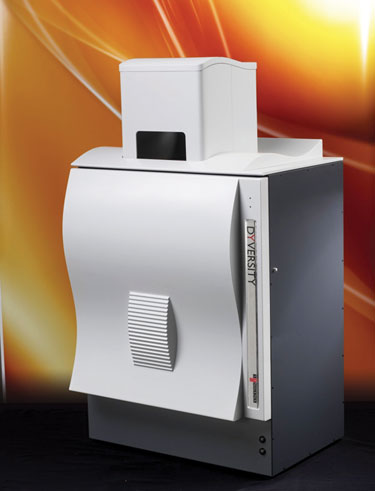September 1, 2008 (Vol. 28, No. 15)
Novel Procedure Broadens Applications in An Effort to Control ES Cell Differentiation
The clinical need for bone- and cartilage-related treatment is increasing due to an aging segment of our society. There have been many approaches to replace impaired skeletal tissues. One of them, embryonic stem cells (ESCs), with their developmental potential for differentiation and self-renewal, could become a suitable cell source for skeletal-tissue regeneration applications. The challenge of identifying chemical cues to efficiently direct ESCs to the desired lineages still remains, however.
In embryogenesis, visceral endoderm plays an important role as a source of signals instructing adjacent cells to differentiate. Previously, it has been demonstrated that the use of conditioned medium with visceral endoderm-like cell lines such as HepG2 and END2 can generate a cell population with enhanced mesodermal-differentiation capability and gene-expression characteristics resembling primitive streak/nascent mesoderm-like cells from undifferentiated ESCs.
Scientists at Imperial College London recently conducted a study, using Syngene image analysis equipment, where they looked at how mouse ESCs were directed to a mesoderm-derived lineage using conditioned media obtained from HepG2 and END2. This was to determine if there were specific proteins in the conditioned media that drive this differentiation process. To do this, the group used differential gel electrophoresis (DIGE) and CCD imaging coupled with MALDI-TOF to isolate and identify co-existing proteins in the HepG2- and END2-conditioned media.
The proteins identified in the study could provide a launching pad for elucidating the signaling pathway of embryogenesis, as well as ESCs, and lead to further development of defined media.

Figure 1
Experimental Design
END2 and HepG2 cells were incubated (37ºC, 96 hours) in T-flasks containing DMEM media and FBS (10%v/v). The resulting condition media was decanted, filter-sterilized through a 0.22 µm filter, and stored at -80ºC until further use. The thawed conditioned media was used to culture mouse ES cells in six-well plates that were incubated further (37ºC, 96 hours).
As a control, six-well plates of mouse ES cells were incubated (37ºC, 96 hours) in standard basal media. The cells were examined using a DM1L microscope to determine if the conditioned media had any effect on morphology. The media was removed from all plates after four days of culture in the conditioned media, an osteogenic media was added, and the cells were incubated (37ºC, 20 days). The cells were stained with Alizarin Red S and examined using a microscope to establish if the conditioned media had any effect on bone-nodule formation.
To determine if there were any proteins in the conditioned media that could be having an effect on cell differentiation, samples of both END2- and HepG2-conditioned media were concentrated 1,000-fold using Millipore’s Centricon® plus-70 centrifugal filter (5 kDa MWCO). These protein samples (150 µg) were run under standard electrophoresis conditions as preparative 2-D DIGE gels with the samples run on the first-dimension gel (nonlinear pH 3–10 IPG strip). The IPG strip was then applied to the second-dimension 18 cm x 16 cm pre-cast Bis-Tris 4-12% polyacrylamide gel and the gels were then stained with colloid Coomassie Blue.
A second set of 2-D DIGE gels was then run where the concentrated END2- and HepG2-conditioned media samples (50 µg) were mixed with Cye dyes. The END2- conditioned media was labeled with Cy5, the HepG2-conditioned media was labeled with Cy3 (and vice versa) in a reciprocal manner and both conditioned-media samples were mixed and labeled with Cy2.
The gels were then transferred to Dyversity, a fully automated CCD-based 2-D gel image analysis system (Figure 1) rather than a laser scanner for imaging.
The gels were imaged using the Cy dye lighting module and 8×8 binning for an exposure time that was optimized for maximum dynamic range. The image was analyzed with image-analysis software and common spots were excised and trypsin digested. Proteins were identified using MALDI-TOF for peptide mass analysis, and the information was analyzed using MASCOT for database searches to identify proteins.

Figure 2
Results and Discussion
Mouse ES cells grew as monolayer colonies in both HepG2- and END2-conditioned media with loose cell-to-cell contact showing flattened morphology. In contrast, mouse ES cells in the standard medium formed rounded 3-D colonies with strong cell-to-cell contact (Figure 2), typical of normal cell morphology.
The preparative 2-D DIGE gel images demonstrated that there is a different protein profile in each of the conditioned media (Figure 3), and the 2-D DIGE gels labeled with Cy dyes showed a number of common protein expressed in both conditioned media (Figure 4).
In total, 42 common protein spots were located from six 2-D DIGE gels. The MALDI-TOF and MASCOT results of the excised proteins showed that 27 of the 42 proteins could be identified, including the visceral-endoderm marker, alpha fetoprotein.
Mouse ES cells differentiated effectively into osteoblasts when treated with either HepG2- or END2-conditioned media. Two-dimensional DIGE imaging coupled with the Dyversity system and MALDI-TOF was successfully employed to identify the proteins present in END2- and HepG2-conditioned media. The identified proteins present in the conditioned media can be further studied to develop defined media, which could be used to effectively direct ES cells to a specific lineage in the future.

Figure 3

Figure 4
Judit Nagy, Ph.D. (j.nagy@imperial. ac.uk), is proteomics facility director at the Institute of Biomedical Engineering, and Yunyi Kang is a research student, Anthony Cass is deputy director and research director, and Athanasios Mantalaris is a reader in biological systems engineering at Imperial College London. Web: www.imperial.ac.uk.



